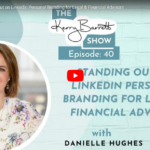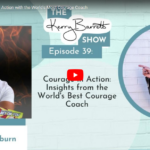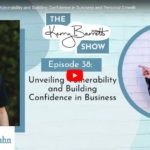
Typically, a PSA signals a Public Service Announcement, but in our case, consider this my Public Speaking Announcement. I want you to succeed when it comes to speaking in public and making a positive first impression is easier than you might think.
While we know that public speaking can be a daunting task for many, the ability to captivate an audience is an invaluable skill. Whether you’re presenting in a boardroom, speaking at a conference, or addressing a community event, making a positive first impression is crucial.
Let’s take a look at the top tips for successful public speaking and review some cautionary advice on what to avoid when you’re ready to give your message the resonance it deserves!
Know your audience
Understanding your audience is the first step to a successful presentation. Tailor your content, tone, and style to resonate with the listeners. Consider their interests, knowledge level, and expectations to create a connection right from the start.
Confidence is key
Confidence exudes competence. Stand tall, make eye contact, and speak with a clear and steady voice. Practice your material beforehand to boost your confidence and help you navigate through your presentation seamlessly.
Master non-verbal communication
Your body language, facial expressions, and gestures speak volumes. Use open and inviting gestures, maintain appropriate eye contact, and be mindful of your posture. A positive and engaging demeanor will help you connect with your audience on a deeper level.
Craft a compelling opening
Begin your presentation with a bang. Start with a compelling story, a thought-provoking question, or a powerful quote to grab your audience’s attention. An intriguing opening sets the tone for the entire presentation and keeps your listeners hooked from the start.
Grab some inspo from these opening lines:
- “How do you explain when things don’t go as we assume? Or better, how do you explain when others are able to achieve things that seem to defy all of the assumptions?” — Simon Sinek
- “I need to make a confession at the outset here. Little over 20 years ago, I did something that I regret. Something that I’m not particularly proud of. Something that in many ways I wish no one would ever know but that here I feel kind of obliged to reveal.” — Dan Pink
- “I have a confession to make. But first I want you to make a little confession to me.” — Kelly McGonigal
- “Imagine a big explosion as you climb through 3,000 ft. Imagine a plane full of smoke. Imagine an engine going clack, clack, clack. It sounds scary. Well I had a unique seat that day. I was sitting in 1D.” — Rick Elias
Okay, I want to hear all of these speeches… Rick Elias’ especially
Practice, practice, practice
Spoiler alert: there is no perfect. So, I never advise my clients that “Practice makes perfect.” What it does do, however, is enhance your comfort and confidence so that you’re equipped to strike a strong first impression.
Just rehearse your presentation multiple times to ensure you’re comfortable with the material. Practice in front of a mirror, record yourself, or even present to a trusted friend or family member for constructive feedback. The more familiar you are with your content, the more confident and natural you’ll appear.
Cautionary advice: aka, what to avoid when it comes to public speaking
Sometimes knowing what not to do can be just as impactful as following a road map to success. There are the pitfalls to watch out for…
- Avoid overloading with information
While it’s essential to provide valuable content, avoid overwhelming your audience with information. Stick to key points, and ensure your message is clear, concise, and easy to follow. You’re the expert — they don’t have to be in order to realize value from your message.
- Steer clear of monotony
Vary your tone, pace, and pitch to keep your audience engaged. A monotonous delivery can lead to disinterest and distraction. Inject energy into your presentation to maintain a lively atmosphere. A well-timed joke can be just the thing to keep them guessing — in a good way.
- Don’t neglect Q&A preparation
Be ready for questions. And welcome them! Thoughtful questions are proof of an engaged audience. Anticipate potential inquiries by imagining what your audience might ask (focus on your top FAQs) and prepare thoughtful responses. Avoid being caught off guard, as a fumbling response can undermine the credibility you’ve worked hard to establish.
- Minimize distractions
Avoid distracting habits like fidgeting, excessive hand movements, or constantly shifting your weight. These behaviors can divert attention from your message and create a negative impression.
Effective public speaking is a skill that can be honed with practice and awareness. By following these tips and steering clear of common pitfalls, you can make a positive first impression that resonates with your audience. Remember, each presentation is an opportunity to showcase your expertise and connect with others—seize it with confidence and authenticity.
I can help you! I’m only a call away and have the expertise to elevate your existing public speaking potential to prowess! Let’s go!




